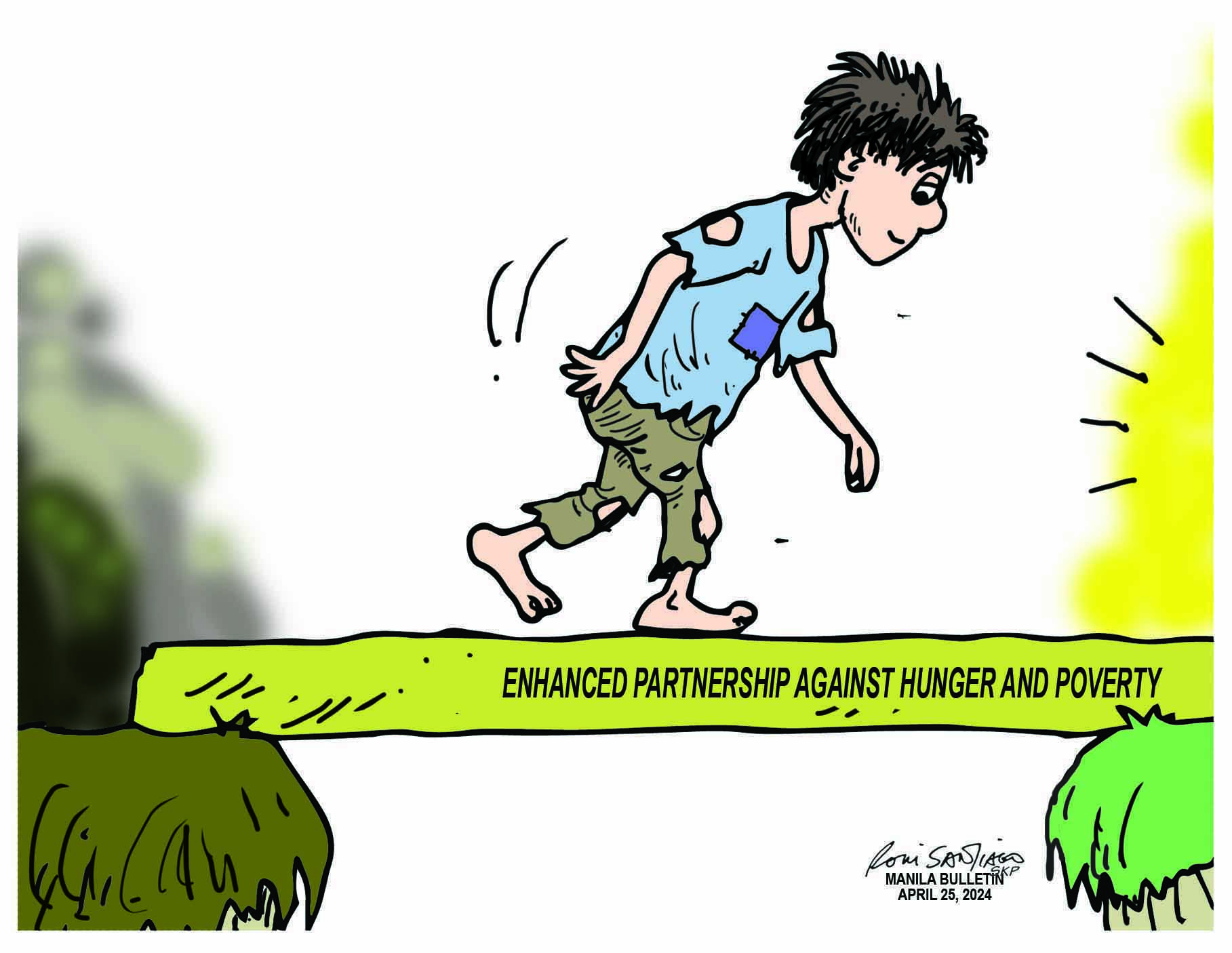
Amid the rising temperature, news of El Niño’s damage to the agriculture sector, and rising prices of food and fuel, there was some good news that peeked out of a survey. An Octa Research survey released April 23 found that fewer Filipinos experienced poverty and hunger in the first quarter of 2024. The number of the “fewer Filipinos” is an estimated 800,000 families (average of four individuals in a family).
Although that number was considered only a “slight” decrease of three percent from the 11.9 families who considered themselves poor in the first quarter of 2024, while self-rated hunger declined from 3.7 million families (14 percent)to 2.9 million families (11 percent), the results showed a continuing downward trend in self-rated poverty and hunger observed since July 2023.
The survey was conducted from March 11 to 14, with 1,200 respondents nationwide. It also found that 42 percent, or an estimated 11.1 million Filipino families, considered themselves poor in the first quarter of 2024. This was a “slight” decrease from 45 percent, or an estimated 11.9 million families, in the fourth quarter of 2023 where self-rated poverty was at 50 percent.
Another piece of good news is that the study found “self-rated poverty is particularly on a downward trend since July 2023,” OCTA said in its report. Meanwhile, the “three percent decrease in self-rated hunger deviates from the upward trend observed in the 4th quarter of 2023.”
Although rated as a “modest” number, the three percent translating to 800,000 families who do not rate themselves poor and hungry shows the good work of government and private sector programs to fight poverty and hunger.
This number is expected to go down with a recent directive of President Marcos for all government agencies to support the implementation of the Enhanced Partnership Against Hunger and Poverty (EPAHP) program, a banner program of Task Force on Zero Hunger. The program aims to institutionalize efforts to mitigate hunger and promote food and nutrition security by linking community-based organizations (CBOs) to prospective markets and providing credit assistance to support food production, processing and distribution. The order was made through Memorandum Circular No. 47 signed by Executive Secretary Lucas Bersamin on April 19.
EPAHP, which was established through an executive order signed in 2020 and amended in 2023, outlines measures to strengthen institutional feeding programs of partner agencies. It also extends credit assistance to support food production, processing and distribution in partnership with government financial intuitions; and link participating community-based organizations (CBOs) to prospective markets.
The initiatives under the program take care of the other important factors to establish food security such as the provision of farm production technologies and extension services to government-assisted farms and rural based organizations.
The private sector has been very active in implementing feeding programs and livelihood opportunities. There are many foundations and non-government organizations (NGOs), too many to mention, that have partnered with local government units (LGUs) in conducting their programs. Many foundations have grown from only conducting a feeding program for malnourished children, to providing livelihood to parents in the communities they serve. The livelihood opportunities have turned small-time farmers into contract growers, fishermen, sewers, and handicraft producers.
There are many opportunities to contribute to efforts to mitigate hunger and poverty. Talk about that in your next meeting with your company colleagues, church group, or former classmates. Let’s work together to see the increase in the number of individuals who rate themselves as “not having experienced hunger.”